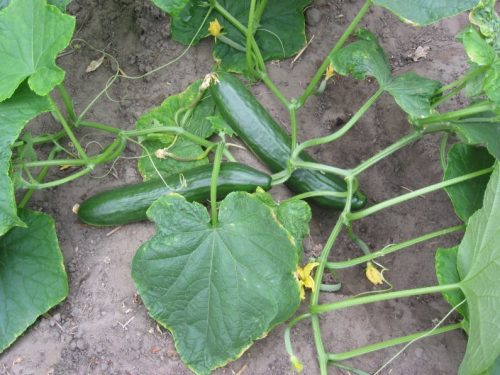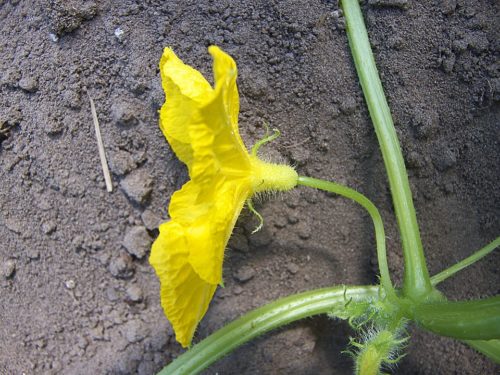The cucumber belongs to the cucurbits and was cultivated over 3,000 years ago.
You are viewing the mobile-adapted version of the page.
The one for tablets, laptop and desktop also provides general information, such as origin and cultivation.
Cucumber (Cucumis sativus). Pre-sow in seed trays from mid-April – mid-May the plants can go outside. Cucumbers for indoor cultivation (greenhouse) can be sown earlier – mid-March. Also from cucumbers, the shoots should be removed from the leaf axils (Pinching). Topping the plant is necessary for a larger harvest. No need to sow your own; grafted cucumber plants are available in stores. These are quite resistant to disease and produce a rich harvest. Cucumbers need to be tied up. Cucumbers are susceptible to mildew: ensure an open, sunny spot and water regularly. Cut away affected leaves and excess leaves (the long shoots without flowers). In greenhouse cultivation, it is necessary to aerate the greenhouse regularly (door open!). In June and July, the harvest is plentiful. Keep harvesting, and the plant will continue to produce cucumbers.
Bugs
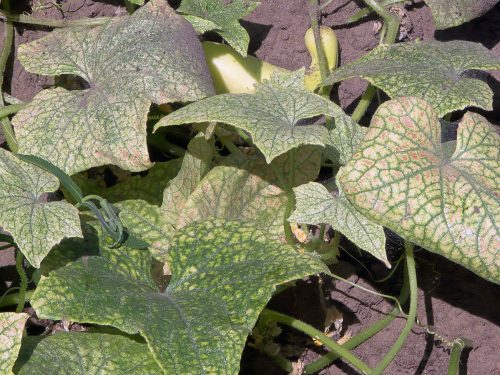
Dot-shaped spots on the leaf; mites on the underside: Red spider mite (Tetranychus urticae).
Deformed fruits: European tarnished plant bug (Lygus rugulipennis).
Deformed leaf: Aphid (Aphidoidea).
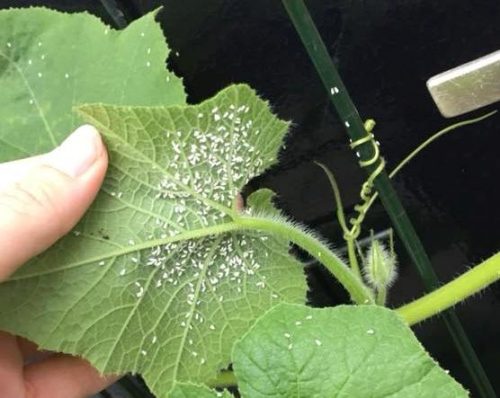
Leaf turns yellow and bumpy; eggs on the underside of the leaf: Greenhouse whitefly (Trialeurodes vaporariorum).
In greenhouse cultivation: silvery spots surrounded by dark green spots (excrement): Onion thrips (Thrips tabaci).
Curled leaves; in some places there is an aphid of about 2 mm in size: Green peach aphid (Myzus persicae).
Fungi & diseases
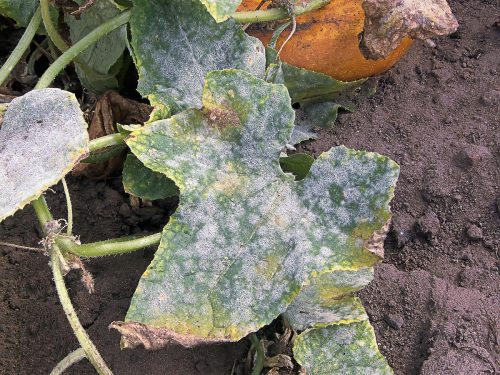
White spots on leaves; growth retarded: Powdery mildew (Ascomycete strain).
White, woolly mold: Sclerotinia disease (Sclerotinia sclerotiorum).
Plant wilts and leaves turn yellow on one side. White (sometimes pink) mold develops on stem and tendrils: Fusarium wilt (Fusarium oxysporum).
Wet, rotten spots at the bottom of the stem: Fusarium foot rot (Fusarium solani).
Leaf becomes covered with a powdery mold: a sort of Powdery mildew (Podosphaera fusca).
Lower leaves turn yellow, plant wilts because the roots can no longer absorb water: infestation by Black root rot of cucumber (Phomopsis sclerotioides).
Square spots on leaf; bacterial slime, fruit will rot: Angular leaf spot (Pseudomonas syringae).
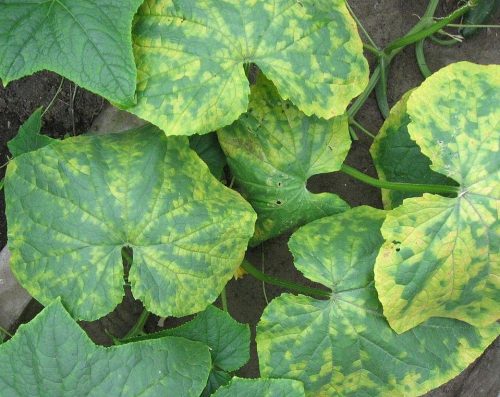
Yellow-green, circle-shaped spots on leaves; serpentine lines: Cucumber mosaic virus (CMV).
Leaf and fruit become covered by a thick layer of fungus and wilt: Verticillium wilt (Verticillium spp).
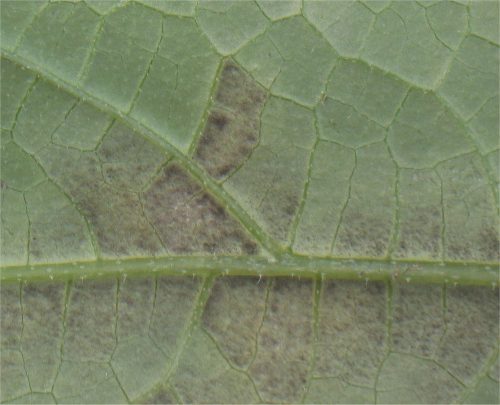
White fungal fluff on the underside of the leaves: Downy mildew (Pseudoperonospora cubensis). It usually involves the lower leaves because the fungus get onto the leaf by splashing rain. In powdery mildew (a species of Ascomycete fungi), the fluff is on the top of the leaves.
Light and dark green spots on young leaves, emergence of dark green bumps. Full-grown leaves show a blotchy pattern: Cucumber green mottle mo
Cucumbers left on the ground develop small, tan to brown, watery spots. As the disease spreads, the spots expand and become crusty and irregularly shaped: belly rot (Rhi
Other
Leaf stalks grow out of leaf axils: offshoots inadequately removed – Pinching.
Harvested cucumbers taste bitter; this can have several causes:
- The somewhat older varieties have male and female flowers. Pollination of the female flower with the pollen of the male produces bitter cucumbers with many seeds. Therefore, in older varieties (and heirloom), remove the male flowers. The female flower is identified by the small thickening (the ovary) between stem and flower. Modern varieties and F1 hybrids have predominantly female flowers, making pollination unlikely. Outside the greenhouse, these cucumbers can still be pollinated by other cucumber species.
- Irregular watering during periods of hot and dry summer weather (heat stress) makes cucumbers bitter.
- Cucumbers harvested too late often taste bitter.
- If the cucumber plants are crossed, the cross may contain cucurbitacin. This is a bitter, toxic substance. The cucumbers are so bitter that they are inedible, which is just as well, because cucurbitacin can cause serious health damage.
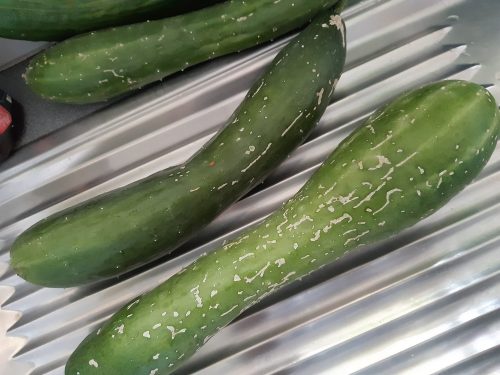
Spots on cucumbers: ripening cucumbers “rub” against neighboring leaves due to strong winds. Abrasion damage is prevented by growing them in a conservatory, greenhouse or in a windless place.

